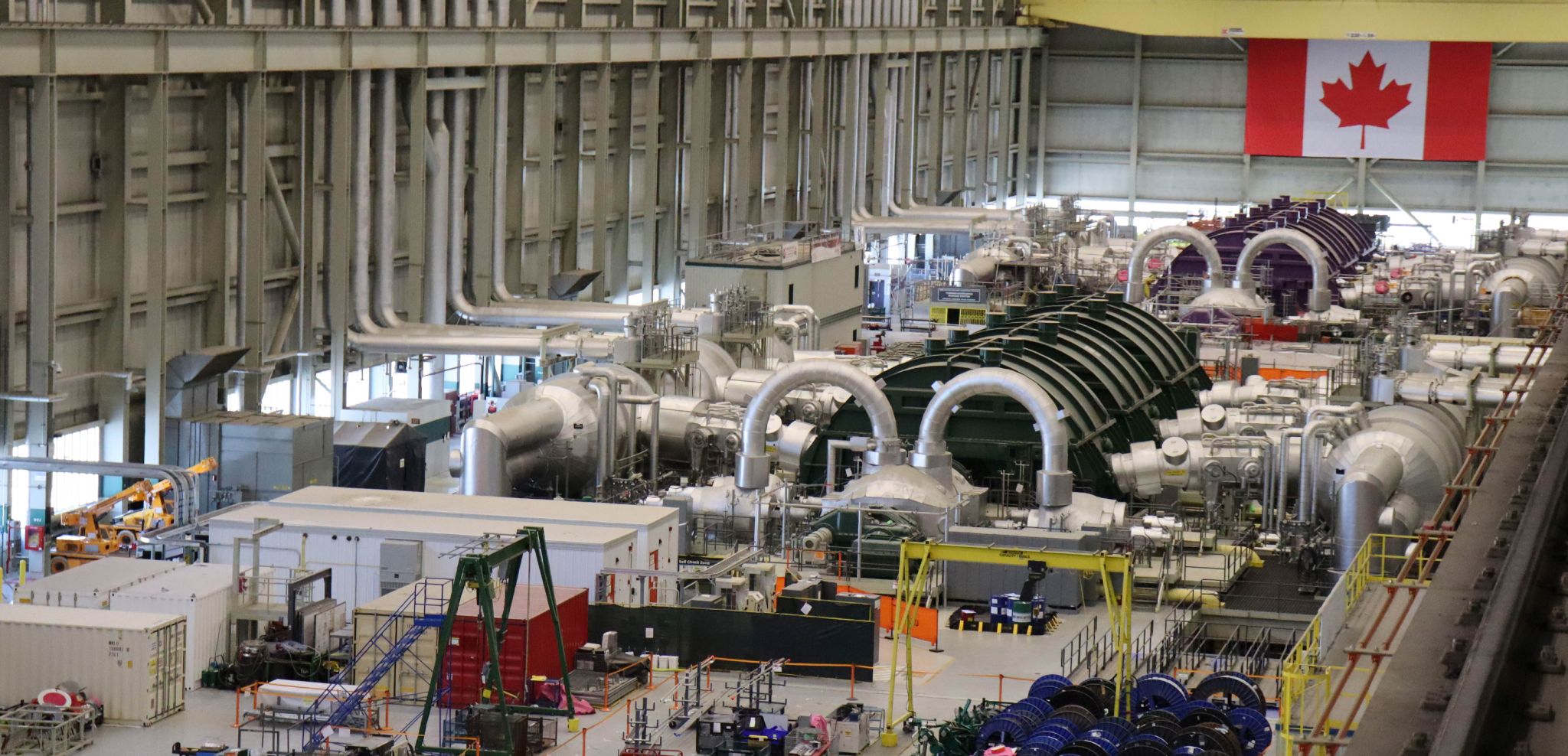A COP28 declaration by 25 countries in 2023 to triple nuclear capacity by 2050 sets the stage for a new race to deploy nuclear power. Several structural shifts have only accelerated that momentum, driven by nuclear’s competitive advantage to power artificial intelligence data centres and advanced manufacturing, and the criticality of energy security in a changing geopolitical order.
Where does Canada stand in a world that is re-embracing nuclear power?
Canada has a window of opportunity but must race to capture it. Its key advantages are its first-mover status on the construction of a grid-scale Small Modular Reactor (SMR) just east of Toronto and an 80-year track record as a formidable civil nuclear power.
Expected to come online by 2030, the SMR power plant in Darlington is Canada’s first new reactor in three decades and has the potential to power 300,000 homes. Crucially, it showcases Ontario’s nuclear prowess, paving the way for its operational and supply-chain expertise to power grids from Saskatchewan to Tennessee to Poland.
But competitors are also on the move. The Trump administration’s Nuclear Reactor Pilot Program aims to have at least three advanced nuclear test reactors achieve an advanced stage by the summer of 2026. China’s SMR program is also advancing, with the demonstration project of its domestic ACP-100 design achieving new construction milestones in 2025.

Canada’s continued success hinges on it bolstering its nuclear sector to deliver new capacity for power and non-power applications, and strengthening fuel supply for tomorrow’s nuclear fleet.
Here’s what’s needed for Canada to succeed:
Anchor nuclear fuel supply around Canadian uranium. Potential reductions in secondary uranium supplies and the emergence of SMRs in the 2030s and 2040s will reconfigure nuclear fuel supply chains, increasing the need for uranium concentrate, conversion, enrichment, and fuel fabrication services. Canada’s world-class uranium deposits and its expertise in uranium milling and conversion are key advantages, and can help anchor a North American—and global—nuclear fuel supply chain.
Collaborate with the U.S. to unlock continental nuclear energy security. Lessons from decades of U.S. operational experience in boiling water reactors (BWR) will be invaluable as Canada constructs its first SMR—based on a BWR design—at the Darlington New Nuclear Project. As a first-mover in SMR construction and deployment, Canadian expertise will be critical to the success of similar U.S. SMR projects when they commence construction and move into operation.
Build investor confidence. Construction risks have hindered private sector participation in new nuclear reactor financing. Successfully translating Ontario’s success in nuclear refurbishment into new reactor construction will be critical to increasing investor confidence in SMRs, though government support—especially in smaller jurisdictions—will remain important.
Nurture Indigenous engagement and equity. Engagement with Indigenous communities is critical for new nuclear projects. That includes raising technology awareness and buy-in from communities where nuclear power has never been built before, but also giving them a stake in the project through jobs, training and equity opportunities.
Vivan Sorab is Senior Manager of Clean Technology, RBC Thought Leadership
This article is intended as general information only and is not to be relied upon as constituting legal, financial or other professional advice. The reader is solely liable for any use of the information contained in this document and Royal Bank of Canada (“RBC”) nor any of its affiliates nor any of their respective directors, officers, employees or agents shall be held responsible for any direct or indirect damages arising from the use of this document by the reader. A professional advisor should be consulted regarding your specific situation. Information presented is believed to be factual and up-to-date but we do not guarantee its accuracy and it should not be regarded as a complete analysis of the subjects discussed. All expressions of opinion reflect the judgment of the authors as of the date of publication and are subject to change. No endorsement of any third parties or their advice, opinions, information, products or services is expressly given or implied by Royal Bank of Canada or any of its affiliates.
This document may contain forward-looking statements within the meaning of certain securities laws, which are subject to RBC’s caution regarding forward-looking statements. ESG (including climate) metrics, data and other information contained on this website are or may be based on assumptions, estimates and judgements. For cautionary statements relating to the information on this website, refer to the “Caution regarding forward-looking statements” and the “Important notice regarding this document” sections in our latest climate report or sustainability report, available at: https://www.rbc.com/our-impact/sustainability-reporting/index.html. Except as required by law, none of RBC nor any of its affiliates undertake to update any information in this document.


